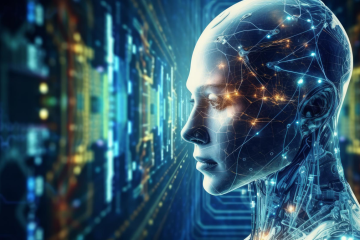Introduction:
Cybersecurity is an ever-evolving field, constantly adapting to new technologies and emerging threats. As organizations increasingly rely on digital systems to conduct business, the importance of robust cybersecurity measures cannot be overstated. In this article, we will delve into the future of cybersecurity, exploring key trends and innovations shaping the landscape of cyber defense.
Emerging Technologies:
One of the most significant trends driving the future of cybersecurity is the adoption of emerging technologies such as artificial intelligence (AI), machine learning (ML), and blockchain. These technologies offer powerful capabilities for enhancing threat detection, incident response, and data protection.
AI and ML algorithms have revolutionized the way organizations detect and respond to cyber threats. By analyzing vast amounts of data in real-time, AI-powered systems can identify anomalous patterns and behaviors indicative of potential attacks. Furthermore, ML algorithms can continuously learn and adapt to new threats, improving the effectiveness of cybersecurity defenses over time.
Blockchain technology, known primarily for its role in cryptocurrencies, is also gaining traction in cybersecurity. The decentralized and immutable nature of blockchain makes it an ideal solution for securing sensitive data and transactions. By leveraging blockchain technology, organizations can enhance data integrity, prevent unauthorized tampering, and streamline secure authentication processes.
Threat Landscape:
As technology evolves, so too do cyber threats, posing new challenges for organizations seeking to protect their digital assets. Ransomware attacks, in which cybercriminals encrypt data and demand payment for its release, have become increasingly prevalent and sophisticated. Similarly, supply chain attacks, where adversaries target vulnerabilities in third-party vendors to infiltrate their primary targets, have emerged as a significant threat to organizations of all sizes.
Moreover, the proliferation of Internet of Things (IoT) devices presents new attack vectors for cybercriminals to exploit. With the number of connected devices expected to reach tens of billions in the coming years, securing IoT ecosystems against cyber threats is paramount. Vulnerabilities in IoT devices, such as default passwords and unencrypted communication channels, can be exploited to launch large-scale attacks, compromising critical infrastructure and sensitive data.
Implications:
The evolving threat landscape and rapid pace of technological innovation have profound implications for organizations’ cybersecurity strategies. Traditional approaches to cybersecurity, such as perimeter-based defenses and signature-based detection, are no longer sufficient to combat advanced threats. Instead, organizations must adopt a proactive and adaptive approach to cybersecurity, leveraging cutting-edge technologies and threat intelligence to stay ahead of adversaries.
Furthermore, the increasing interconnectedness of digital ecosystems necessitates collaboration and information sharing among stakeholders. Threat intelligence platforms enable organizations to exchange information about emerging threats and vulnerabilities, enabling them to collectively defend against cyber attacks. Additionally, public-private partnerships play a crucial role in cybersecurity, facilitating collaboration between government agencies, industry leaders, and cybersecurity researchers to address global cyber threats effectively.
Ethical Considerations:
As organizations embrace new technologies and strategies to enhance cybersecurity, it is essential to consider the ethical implications of these innovations. AI-powered cybersecurity systems, for example, raise concerns about bias and discrimination in threat detection algorithms. Ensuring transparency and accountability in the development and deployment of AI technologies is essential to mitigate these risks and uphold ethical standards.
Furthermore, the growing reliance on data for cybersecurity purposes raises privacy concerns, particularly regarding the collection and processing of personal information. Organizations must adhere to strict privacy regulations, such as GDPR and CCPA, to protect individuals’ rights and freedoms while safeguarding against cyber threats. Implementing privacy-enhancing technologies, such as differential privacy and homomorphic encryption, can help strike a balance between security and privacy in cybersecurity practices.
Conclusion:
In conclusion, the future of cybersecurity is characterized by rapid technological advancement, evolving threat landscapes, and ethical considerations. By embracing emerging technologies such as AI, ML, and blockchain, organizations can strengthen their cyber defenses and adapt to the ever-changing nature of cyber threats. Moreover, collaboration and information sharing among stakeholders are essential for collective defense against cyber attacks. As we continue to navigate the complexities of cyberspace, it is imperative to uphold ethical standards and protect individuals’ rights while safeguarding against emerging threats.


